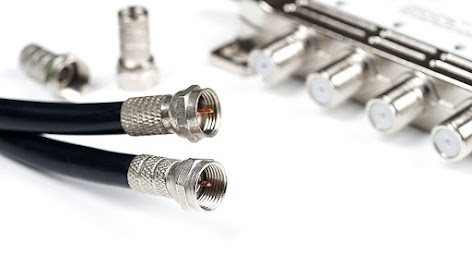Different Types of Coaxial Cables and Their Uses | MILCOM
There are different types of coaxial cables used for different purposes. The most common type of coaxial cable is the RG-6, which is used for cable television and satellite TV. The next most common type is the RG-59, which is used for Ethernet and other computer networks. There are also special types of coaxial cables that are used for military and aerospace applications.
The RG-6 is the most common type of coaxial cable used in the home. It is easy to install and is very affordable. This type of coaxial cable is also very flexible, making it easy to run through walls and ceilings. RG-6 coaxial cable is also very resistant to interference, making it the preferred choice for cable TV and satellite TV.
The RG-59 is the second most common type of coaxial cable. It is thicker than the RG-6 and has a higher resistance to interference. This makes it the preferred choice for Ethernet and other computer networks. RG-59 coaxial cable is also more difficult to install, making it more expensive than RG-6.
There are also special types of coaxial cables that are used for military and aerospace applications. These cables are made to withstand high levels of interference and are very durable. However, they are also very expensive and are not commonly used in the home.
There are different types of coaxial cables and each have their own specific uses. Coaxial cable, or coax, is a type of electrical cable that has an inner conductor surrounded by a dielectric (insulating material) and an outer conductor. The outer conductor is usually shielded by a metal screen.
Coaxial cables are used in a variety of applications, including computer networks, TV and radio broadcasting, and cable television. They are also used in aircraft to transmit data and power.
There are three main types of coaxial cables:
1. RG-59: This is a thin coaxial cable that is most commonly used for cable television and CCTV applications.
2. RG-6: This is a thicker coaxial cable that is commonly used for cable television, satellite TV, and broadband internet applications.
3. RG-11: This is the thickest type of coaxial cable and is typically used for long-distance applications, such as connecting buildings in a campus environment.
Coaxial cables are also classified by their impedance, which is the measure of the cable’s ability to transmit electrical signals. The most common impedance values for coaxial cables are 50 and 75 ohms.
When choosing a coaxial cable for your application, it’s important to consider the type of cable, the application, and the desired impedance.
There are different types of coaxial cables and each has its own specific use. In this blog post, we will be discussing the different types of coaxial cables and their uses.
The most common type of coaxial cable is the RG-6 cable. This type of cable is typically used for television and satellite applications. The RG-6 cable has a dielectric insulation material that is made of polyethylene. The RG-6 also has a copper-clad steel center conductor and a copper braided shield.
Another type of coaxial cable is the RG-11 cable. The RG-11 cable is typically used for CATV and broadband applications. The RG-11 cable has a dielectric insulation material that is made of foamed polyethylene. The RG-11 also has a copper-clad steel center conductor and a copper braid shield.
The RG-59 cable is another type of coaxial cable. The RG-59 cable is typically used for video applications. The RG-59 cable has a dielectric insulation material that is made of solid polyethylene. The RG-59 also has a copper-clad steel center conductor and a copper braid shield.
The last type of coaxial cable that we will be discussing is the RG-8 cable. The RG-8 cable is typically used for radio frequency applications. The RG-8 cable has a dielectric insulation material that is made of solid polyethylene. The RG-8 also has a copper-clad steel center conductor and a copper braid shield.
Visit Us For More Useful Link :- coaxial nbn cable

Comments
Post a Comment